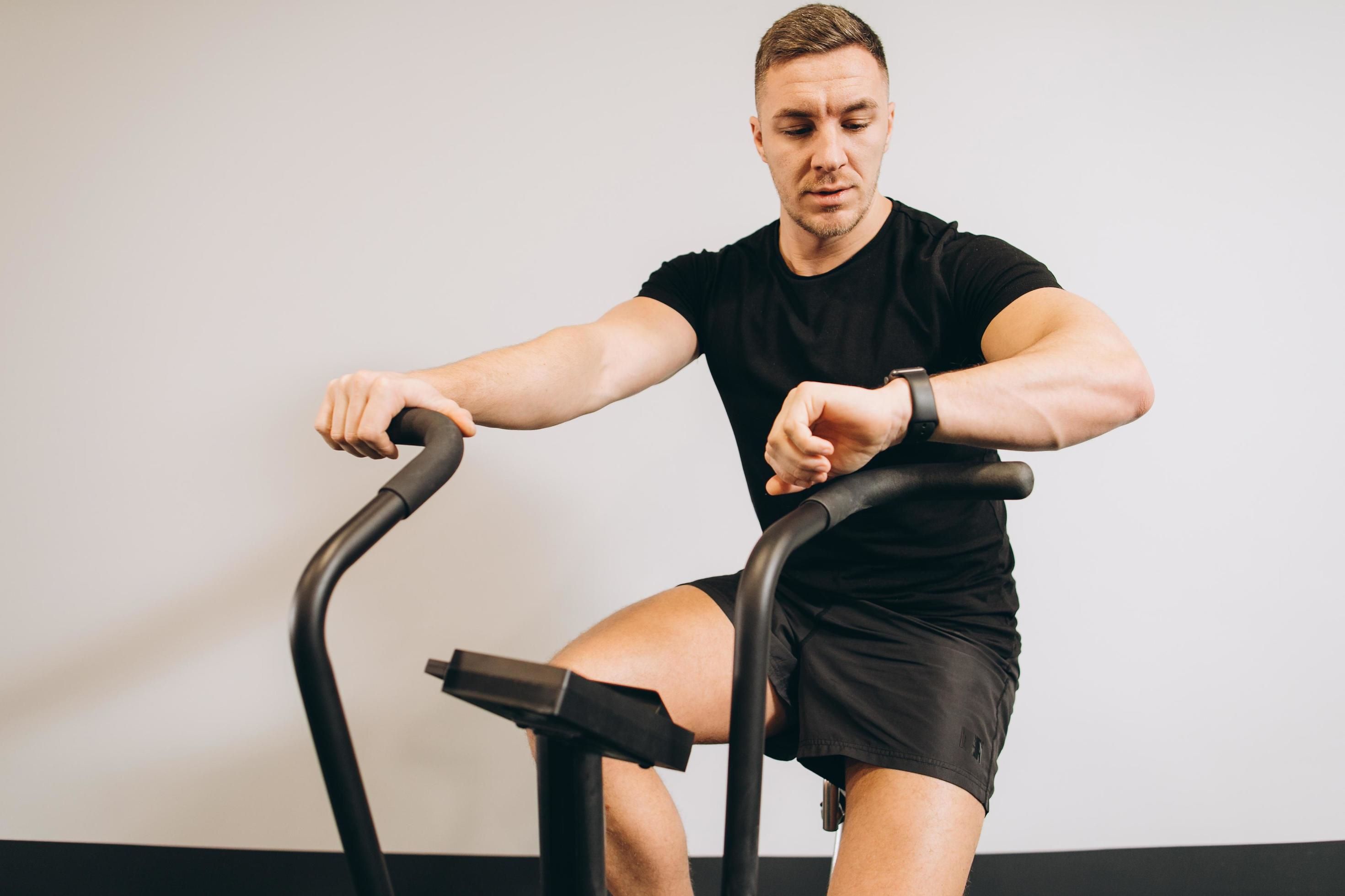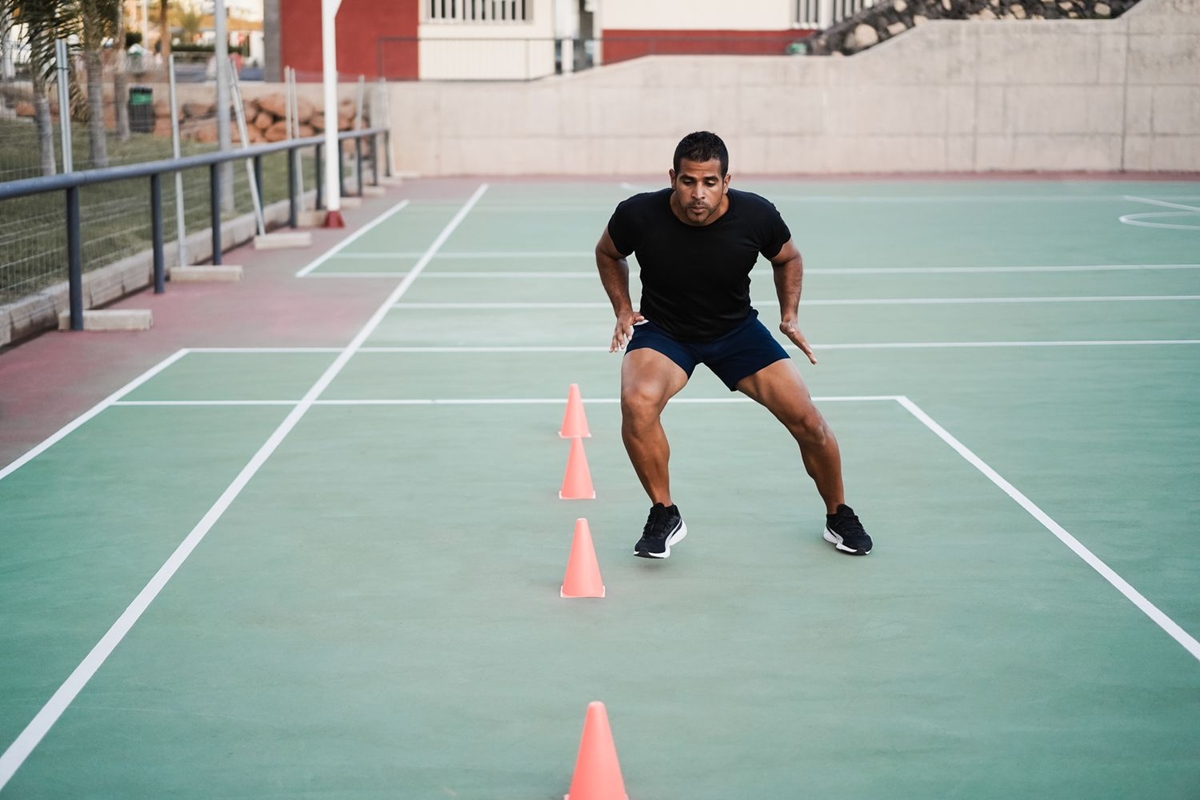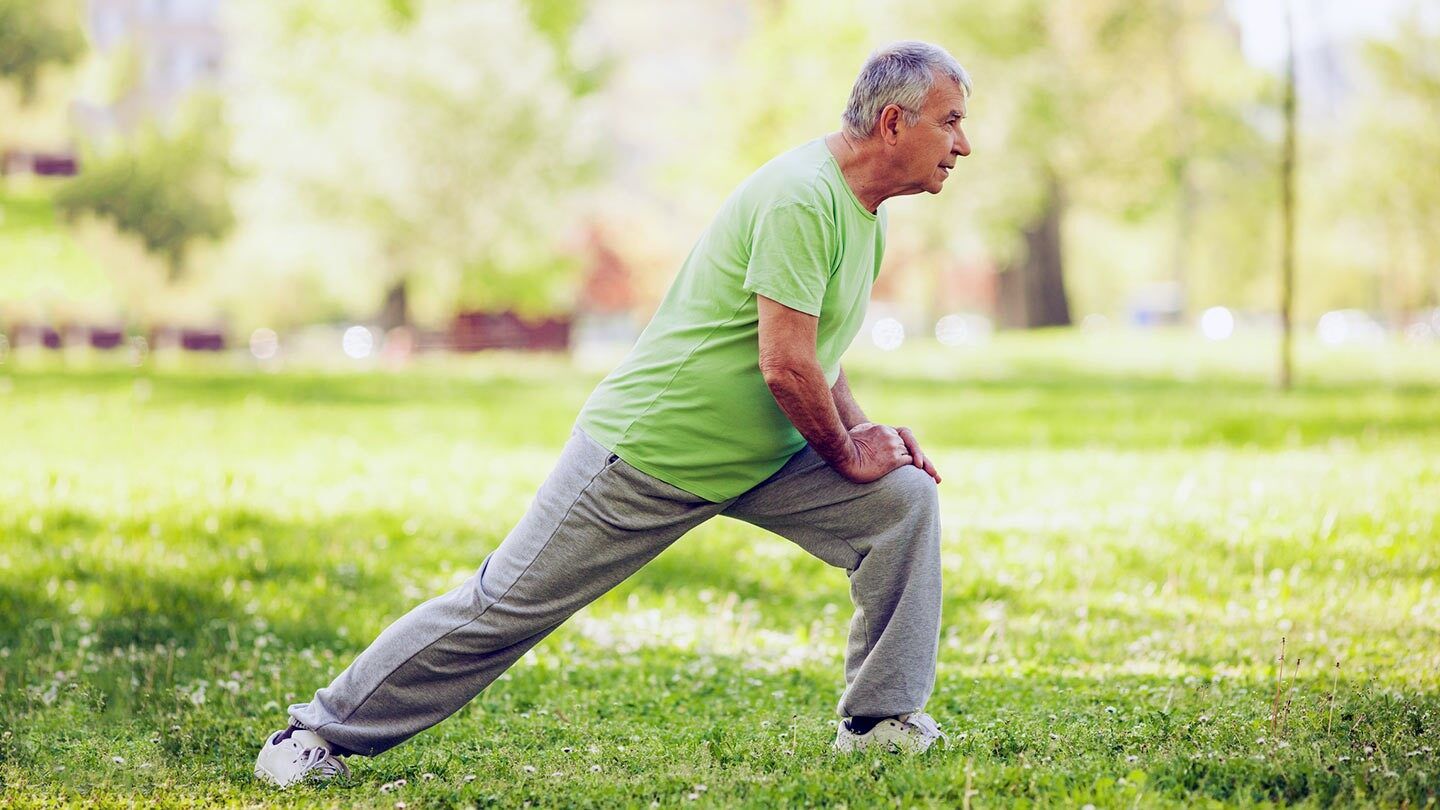Home>Misc>Featured>Jogging, Swimming, And Biking Are Examples Of What Type Of Exercise?


Featured
Jogging, Swimming, And Biking Are Examples Of What Type Of Exercise?
Modified: January 22, 2024
Discover the benefits of featured exercises like jogging, swimming, and biking. Find out what type of exercise these activities fall into and how they can improve your fitness.
Introduction
Exercise is an essential component of a healthy lifestyle. It not only helps us maintain physical fitness but also contributes to our mental well-being. There are various types of exercises that target different aspects of fitness, including cardiovascular endurance, strength training, flexibility, and balance. In this article, we will focus on one specific type of exercise: cardiovascular exercise.
Cardiovascular exercise, often referred to as cardio or aerobic exercise, is any activity that increases your heart rate and respiratory rate for an extended period. It is known for its ability to improve cardiovascular health, boost endurance, burn calories, and promote overall well-being. Jogging, swimming, and biking are three popular examples of cardiovascular exercise.
Engaging in regular cardiovascular exercise has numerous benefits. It can help reduce the risk of chronic illnesses such as heart disease, stroke, and diabetes. It also aids in weight management, improves lung function, strengthens the immune system, and enhances mental health by reducing stress and improving cognitive function.
Now, let’s delve into the details of cardiovascular exercise and explore the examples of jogging, swimming, and biking, which are widely recognized as effective forms of this type of exercise.
Definition of Exercise
Before we dive into the specific types of exercise, let’s take a moment to understand the general definition of exercise. Exercise can be defined as any physical activity that requires effort and is performed to improve or maintain physical fitness.
Exercise can take many forms, including aerobic exercise, strength training, flexibility exercises, and balance exercises. Each type of exercise has its own unique benefits and contributes to overall fitness in different ways.
Aerobic exercise, also known as cardiovascular exercise, focuses on improving cardiovascular health and endurance. It involves rhythmic movements that increase heart rate and breathing rate, working large muscle groups over an extended period of time. Examples of aerobic exercises include jogging, swimming, cycling, and dancing.
Strength training, on the other hand, aims to build and strengthen muscles. This type of exercise typically involves using resistance, such as weights or resistance bands, to challenge the muscles and promote growth. Some common strength training exercises include weightlifting, push-ups, squats, and lunges.
Flexibility exercises focus on improving the range of motion and flexibility of the muscles and joints. These exercises can include stretching, yoga, Pilates, and tai chi. By incorporating flexibility exercises into your routine, you can enhance your posture, prevent injuries, and improve overall mobility.
Balance exercises are designed to improve stability and coordination. These exercises often involve standing on one leg, using balance boards, or engaging in activities like yoga or tai chi. By practicing balance exercises, you can reduce the risk of falls and improve your overall balance and coordination.
It’s important to note that a well-rounded fitness routine includes a combination of different types of exercise. By incorporating aerobic exercise, strength training, flexibility exercises, and balance exercises into your routine, you can achieve optimal fitness and overall well-being.
Types of Exercise
Exercise comes in many forms, each targeting different aspects of physical fitness. Let’s explore the various types of exercise to understand their benefits and how they contribute to overall health and well-being.
1. Cardiovascular Exercise: Cardiovascular exercise, also known as cardio or aerobic exercise, is focused on improving cardiovascular health and endurance. It involves activities that increase heart rate and breathing rate, working large muscle groups over an extended period. Examples of cardiovascular exercises include jogging, swimming, cycling, dancing, and aerobic classes.
2. Strength Training: Strength training, also known as resistance training, aims to build and strengthen muscles by using resistance or weight. It can involve lifting weights, using resistance bands, or using bodyweight exercises like push-ups and squats. Strength training helps improve muscle strength, increase metabolism, and enhance bone density.
3. Flexibility Exercise: Flexibility exercises focus on improving the range of motion and flexibility of muscles and joints. They include stretching exercises, yoga, Pilates, and tai chi. Flexibility exercises not only help prevent injury but also improve posture, reduce muscle tension, and enhance overall mobility.
4. Balance Exercise: Balance exercises are designed to improve stability and coordination. They often involve activities that challenge balance, such as standing on one leg, balance boards, or specialized balance exercises like yoga and tai chi. Practicing balance exercises helps prevent falls and enhance overall balance and body control.
5. High-Intensity Interval Training (HIIT): HIIT is a type of exercise that alternates between periods of intense, high-intensity exercise and short recovery periods. It is an efficient way to burn calories, improve cardiovascular fitness, and increase metabolism. HIIT workouts can involve exercises like sprints, burpees, and jump squats.
6. Low-Impact Exercise: Low-impact exercises are those that minimize stress on the joints and are suitable for individuals with joint issues or injuries. Examples include walking, swimming, cycling, and elliptical training. Low-impact exercises still provide cardiovascular benefits without placing excessive strain on the joints.
Incorporating a combination of these exercise types into your routine ensures that you are targeting various aspects of fitness, promoting overall health and well-being. It’s important to choose exercises that align with your fitness goals, physical abilities, and personal preferences.
Cardiovascular Exercise
Cardiovascular exercise, also known as cardio or aerobic exercise, is a form of physical activity that primarily targets the cardiovascular system. It involves repetitive, rhythmic movements that elevate heart rate and breathing rate, resulting in increased oxygen intake and improved circulation. Engaging in regular cardiovascular exercise offers numerous health benefits and contributes to overall fitness.
One of the main benefits of cardiovascular exercise is its positive impact on cardiovascular health. By consistently challenging the heart and lungs, cardio exercise strengthens the heart muscle, improves blood circulation, and enhances the efficiency of oxygen delivery throughout the body. This, in turn, helps reduce the risk of developing heart disease, high blood pressure, and stroke.
In addition to its cardiovascular benefits, cardio exercise is also effective for weight management. It burns calories and helps create a calorie deficit, which is crucial for weight loss. Regular cardiovascular workouts can help increase metabolism and improve body composition by reducing excess fat and maintaining lean muscle mass.
Cardiovascular exercise is also known for its positive effects on mental health. It stimulates the release of endorphins, also known as the “feel-good” hormones, which can elevate mood and reduce stress levels. Regular cardio workouts have been linked to improved mental well-being, reduced symptoms of anxiety and depression, and enhanced cognitive function.
There are various ways to engage in cardiovascular exercise, and the choice depends on personal preference, fitness level, and access to equipment or facilities. Examples of cardiovascular exercises include jogging or running, swimming, cycling, dancing, aerobics classes, and high-intensity interval training (HIIT).
Jogging is a popular form of cardio exercise that can be performed outdoors or on a treadmill. It is a low-cost and easily accessible option that improves cardiovascular endurance and strengthens lower body muscles. Swimming is another excellent choice as it provides a full-body workout while placing minimal stress on the joints. It is particularly beneficial for individuals with joint issues or injuries.
Cycling, both indoors on a stationary bike or outdoors on a road bike, is a versatile cardio exercise that targets the lower body muscles and improves cardiovascular fitness. Dancing, whether in the form of Zumba, hip-hop, or any other style, offers a fun and energetic way to get your heart rate up and improve coordination.
High-intensity interval training, or HIIT, is a type of cardio exercise that alternates between short bursts of intense activity and brief periods of rest. This method has been shown to be highly effective for improving cardiovascular fitness and burning calories in a shorter amount of time.
Incorporating cardiovascular exercise into your fitness routine is crucial for maintaining a healthy heart, managing weight, and improving overall well-being. Aim for at least 150 minutes of moderate-intensity cardio exercise or 75 minutes of vigorous-intensity cardio exercise per week, spread out over several days, to reap the maximum benefits.
Examples of Cardiovascular Exercise
Jogging, swimming, and biking are three excellent examples of cardiovascular exercise that can help improve cardiovascular health, burn calories, and boost overall fitness.
Jogging is a popular form of cardiovascular exercise that can be easily incorporated into a daily routine. Whether you choose to jog on a treadmill or outdoors, it is a simple yet effective way to get your heart rate up and burn calories. Jogging not only improves cardiovascular endurance but also strengthens the muscles of the lower body, including the calves, quadriceps, and hamstrings. It can be done at your own pace, making it suitable for beginners and experienced runners alike. Just 30 minutes of jogging at a moderate pace can provide significant cardiovascular benefits.
Swimming is a low-impact cardiovascular exercise that offers a full-body workout. It is especially beneficial for individuals with joint issues or injuries, as the water provides buoyancy and reduces strain on the joints. Swimming engages multiple muscle groups, including the arms, legs, and core, while simultaneously increasing heart rate and improving lung capacity. Whether you swim laps, take a water aerobics class, or simply enjoy leisurely swimming, this activity provides cardiovascular benefits and enhances overall strength and endurance.
Biking, whether indoors on a stationary bike or outdoors on a road bike, is a fantastic way to improve cardiovascular fitness. Cycling not only benefits the cardiovascular system but also strengthens the muscles of the lower body, including the quadriceps, hamstrings, and glutes. It is a low-impact exercise that can be tailored to different fitness levels, making it suitable for people of all ages. Cycling outdoors allows you to enjoy nature and explore new places, while indoor cycling classes offer a high-energy and motivating environment. Aim for 30 minutes to an hour of biking, at a moderate to high intensity, several times a week to experience the cardiovascular benefits.
Other examples of cardiovascular exercises include brisk walking, dancing, jump rope, aerobic classes, and high-intensity interval training (HIIT). The key is to choose activities that you enjoy and can sustain over time. Whether it’s running on a treadmill, swimming laps in a pool, biking through scenic routes, or dancing to your favorite music, find an activity that motivates you to keep moving and elevates your heart rate.
Remember to start at a comfortable pace and gradually increase the duration and intensity of your cardiovascular workouts. It’s also important to listen to your body and take rest days when needed. By incorporating these examples of cardiovascular exercises into your routine, you can improve your cardiovascular health, burn calories, and enhance your overall fitness level.
Jogging
Jogging is a widely popular form of cardiovascular exercise that involves running at a steady and moderate pace. It is a versatile and accessible activity that can be done outdoors, on a treadmill, or at a local track. Jogging offers numerous health benefits and is suitable for individuals of different fitness levels.
One of the main advantages of jogging is its ability to improve cardiovascular endurance. By consistently challenging the heart and lungs, jogging strengthens the cardiovascular system, increasing its capacity to deliver oxygen and nutrients to tissues. Over time, this improves overall cardiovascular health, reduces the risk of heart disease, and enhances endurance.
Jogging is also an effective way to burn calories and maintain a healthy body weight. It is a weight-bearing exercise that engages multiple muscle groups, including the legs, core, and upper body. Regular jogging sessions help increase metabolism, promote fat loss, and improve body composition by reducing excess fat while preserving lean muscle mass.
Another benefit of jogging is its positive impact on mental well-being. Engaging in this physical activity releases endorphins, also known as the “feel-good” hormones. These hormones can boost mood, reduce stress levels, and improve overall mental health. Jogging provides a natural stress relief and can be an effective tool for managing anxiety and depression.
One of the greatest advantages of jogging is its low cost and accessibility. It requires minimal equipment – a good pair of running shoes – and can be done almost anywhere. Whether you choose to jog around your neighborhood, in a local park, or on a treadmill at the gym, it offers the flexibility to fit into your schedule and accommodate different fitness levels.
To start jogging, it is important to ensure proper form and technique. Begin with a warm-up, which can include stretching and light exercises to prepare the muscles and joints for activity. Gradually increase your pace and distance over time, allowing your body to adapt to the demands of jogging.
It is important to listen to your body and avoid pushing too hard, especially if you are new to jogging. Start with shorter sessions and gradually increase the duration and intensity. If you experience pain or discomfort, adjust your speed or take breaks as needed. Remember to stay hydrated and wear appropriate clothing and footwear to support your body while jogging.
Incorporating jogging into your fitness routine can have a significant impact on your overall health and well-being. Aim for at least 150 minutes of moderate-intensity or 75 minutes of vigorous-intensity jogging per week, spread out over several days. Consistency is key to reaping the benefits of this effective cardiovascular exercise.
Swimming
Swimming is a highly beneficial and enjoyable form of cardiovascular exercise that offers a full-body workout. It is a low-impact activity that can be enjoyed by people of all ages and fitness levels, making it an excellent choice for individuals with joint issues or injuries.
One of the key advantages of swimming is its ability to provide a comprehensive cardiovascular workout. As a whole-body exercise, swimming engages multiple muscle groups simultaneously, including the arms, legs, core, and back. The resistance of the water adds an extra level of challenge, making swimming an effective way to improve cardiovascular fitness and endurance.
Unlike high-impact activities like running or jumping, swimming puts minimal strain on the joints due to the buoyancy of the water. This makes it an ideal exercise for those with orthopedic conditions or individuals recovering from injuries. The weightlessness of water reduces impact forces and provides a supportive environment for rehabilitation and building strength.
Swimming also offers a unique advantage by enhancing lung capacity and breath control. In order to swim effectively, you need to focus on rhythmic breathing, which can improve respiratory function and strengthen the respiratory muscles. This can be particularly beneficial for individuals with asthma or other respiratory conditions.
In addition to its cardiovascular benefits, swimming can also contribute to overall muscular strength and tone. The resistance provided by the water helps build and tone muscles, particularly in the arms, shoulders, back, and legs. It promotes a balanced muscle development and can help improve posture and body alignment.
Swimming is a versatile activity that can be modified to suit different fitness goals and preferences. Whether you prefer swimming laps, participating in water aerobics classes, or engaging in recreational swimming, you can tailor your swimming routine to meet your specific needs. You can vary your swimming strokes, combine different styles, or use various equipment such as kickboards or swimming resistance bands to add variety and challenge to your workouts.
Lastly, swimming offers a unique experience of tranquility and mindfulness. The rhythmic and repetitive nature of swimming can have a calming effect on the mind, reducing stress levels, and promoting relaxation. It provides an opportunity to disconnect from the outside world and focus on the sensation of the water and the rhythm of your strokes.
To incorporate swimming into your fitness routine, find a local pool or aquatic center that offers swimming facilities. Start with a warm-up, including gentle stretching and a few laps of easy swimming, to prepare your body for more vigorous activity. Gradually increase the intensity and duration of your swims, challenging yourself to swim a little farther or faster each time.
Remember to listen to your body and take breaks as needed. Stay hydrated by drinking water before and after your swim sessions, and consider wearing goggles and a bathing cap to protect your eyes and hair. Most importantly, enjoy the experience of swimming and reap the countless benefits it offers for your cardiovascular health and overall well-being.
Biking
Biking, whether outdoors or on a stationary bike, is a fantastic form of cardiovascular exercise that offers numerous health benefits. It is a low-impact activity that can be enjoyed by people of all ages and fitness levels, making it a popular choice for individuals seeking to improve their cardiovascular fitness.
One of the main advantages of biking is its ability to improve cardiovascular health. It is a highly effective aerobic exercise that elevates heart rate, increases lung capacity, and improves overall circulation. Regular biking strengthens the heart muscle, reduces the risk of heart disease, and improves cardiovascular endurance.
In addition to its cardiovascular benefits, biking also helps build strength and endurance in the lower body muscles, such as the quadriceps, hamstrings, and calves. The pedaling motion provides resistance and engages these muscle groups, contributing to improved muscle tone and overall lower body strength.
Biking is a weight-bearing exercise that is gentle on the joints, making it an ideal choice for individuals with joint issues or those recovering from injuries. The smooth and fluid motion of biking reduces impact forces on the joints, providing a safe and effective form of exercise.
Outdoor biking offers the added advantage of being able to explore scenic routes and enjoy the beauty of nature. You can choose to bike on paved roads or explore off-road trails, tailoring your biking experience to your preferences and fitness goals. Riding a bike outdoors can also be a social activity, allowing you to connect with friends or join biking groups for added motivation and enjoyment.
If outdoor biking is not feasible, stationary biking is an excellent alternative. Stationary bikes provide a convenient option for indoor workouts and allow you to monitor your progress and adjust the intensity as needed. Whether you choose a traditional stationary bike, a spin bike, or a recumbent bike, you can still enjoy the cardiovascular benefits of biking in the comfort of your home or a gym.
Biking is a customizable exercise that can be tailored to your fitness level and goals. You can adjust the intensity of your biking sessions by choosing different terrains, increasing resistance on a stationary bike, or varying your speed. Interval training, where you alternate between periods of high intensity and recovery, can be incorporated to challenge your cardiovascular system and burn more calories.
Remember to start your biking sessions with a warm-up to prepare your muscles and joints. Increase your cycling duration and intensity gradually over time, allowing your body to adapt and avoid overexertion. Hydration is also important, so remember to drink water before, during, and after your biking sessions.
Whether you choose outdoor biking or stationary biking, incorporating biking into your routine can provide a fun and effective way to improve cardiovascular fitness, strengthen muscles, and enjoy the outdoors. So grab your bike, put on your helmet, and hit the road or hop on that stationary bike to embark on a biking journey to better health.
Conclusion
Exercise is a vital component of a healthy lifestyle, and cardiovascular exercise plays a significant role in achieving optimal fitness and overall well-being. Jogging, swimming, and biking are three excellent examples of cardiovascular exercises that offer numerous benefits for the body and mind.
Jogging is a versatile activity that can be done anywhere and at any time. It improves cardiovascular endurance, helps maintain a healthy body weight, and enhances mental well-being. Swimming, on the other hand, provides a low-impact, full-body workout that is gentle on the joints. It improves cardiovascular fitness, builds strength, and promotes relaxation. Biking, whether indoors or outdoors, is an enjoyable way to boost cardiovascular health, strengthen lower body muscles, and explore scenic routes.
Incorporating these cardiovascular exercises into your fitness routine can have a profound impact on your overall health. They can enhance cardiovascular endurance, improve lung capacity, burn calories, and help manage weight. These exercises also contribute to mental well-being by reducing stress, boosting mood, and promoting relaxation.
Remember to start gradually and listen to your body when engaging in cardiovascular exercise. It’s important to warm up properly, wear appropriate gear, and stay hydrated throughout your workouts. By making cardiovascular exercise a regular part of your routine, you can enjoy the numerous benefits it offers and maintain a healthy, active lifestyle.
So whether you choose to go for a jog in the park, take a swim in a pool, or hop on a bike for a ride, embrace the joy of cardiovascular exercise and experience the positive impact it has on your physical and mental well-being.









